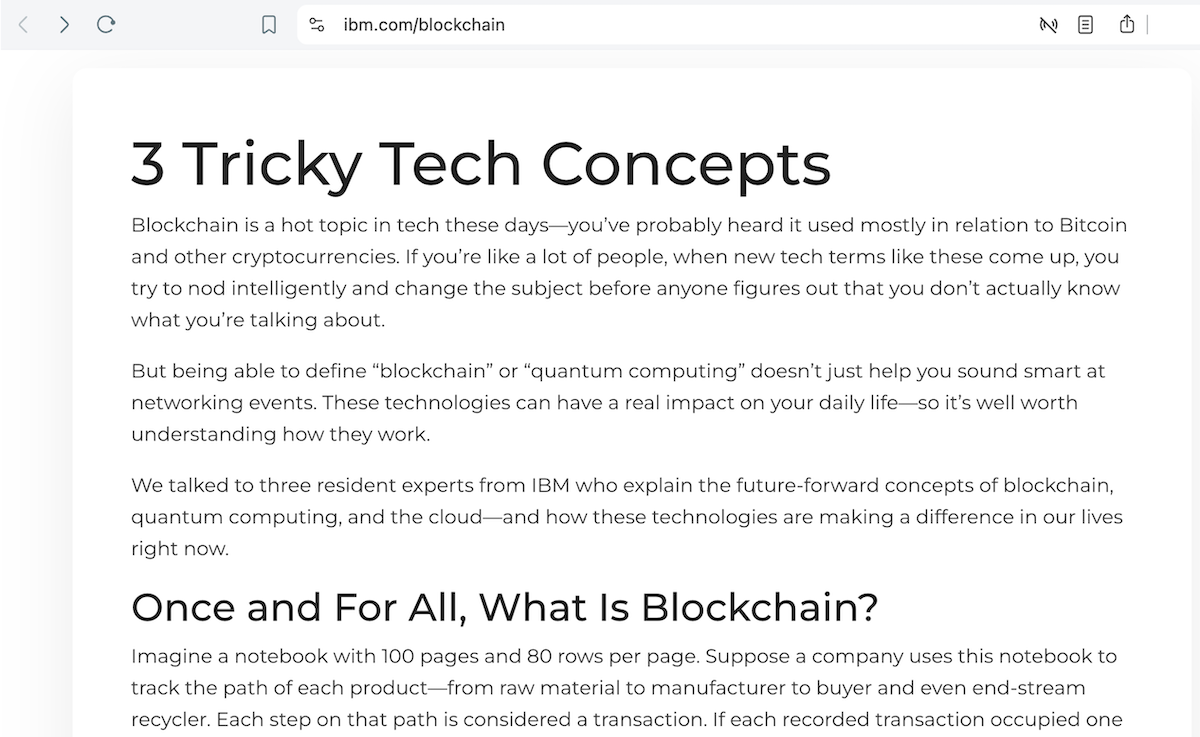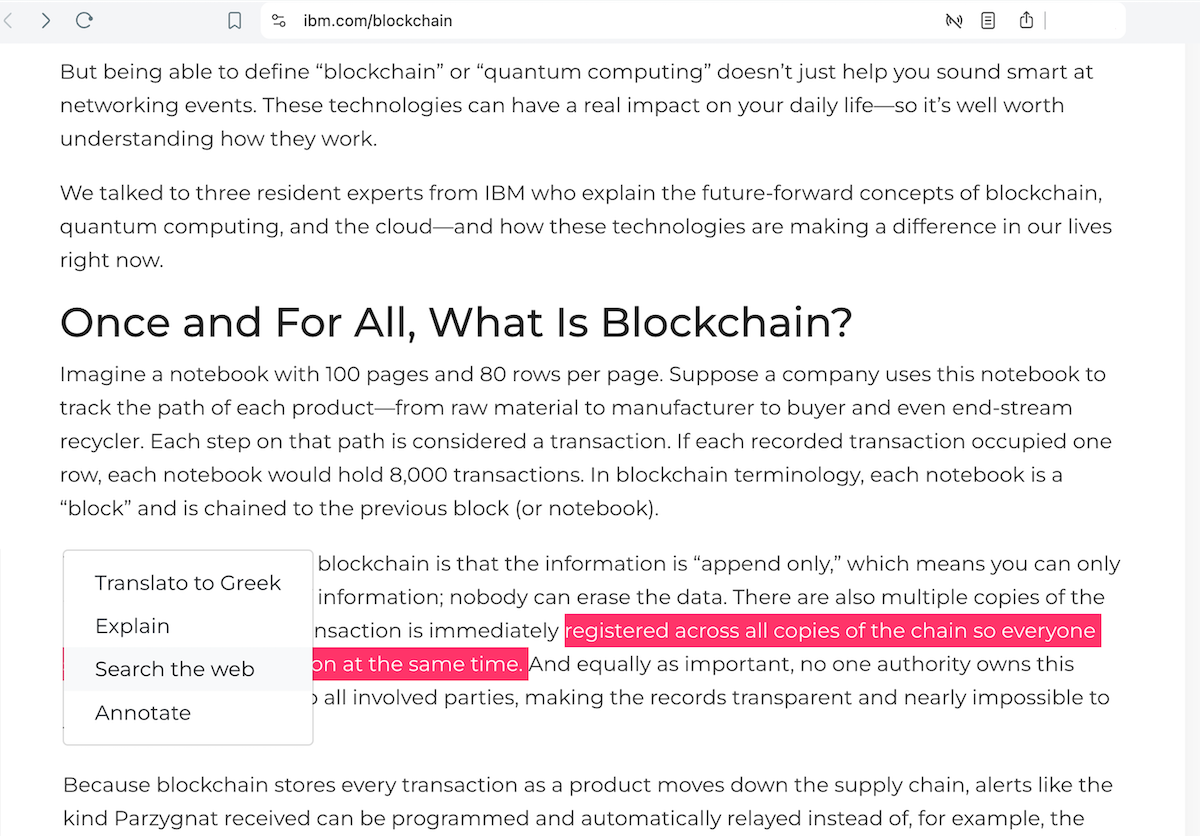Web 2.9
Are you tired of scrolling through floating squares of annoying pictures and sales slogans to find the information you need?
World-Wide Waste

What it feels like to surf Internet these days
While the tech world is exploring ways to deliver Web 3.0, it is important to realize that our journey through Web 2.0 is far from over.
If the earlier age of the World Wide Web was denoted by the war of browsers, today, we are caught in the era of the never-ending battle between JavaScript and AdBlockers.
Granted, the modern Internet has transformed into a platform for hosting applications. Server apps, bots, browser apps, browser extensions, and mobile apps fight for their place in the market of people's attention. Nonetheless, we still need the web to serve as a content repository.
Leaving aside the problems associated with plagiarism, fake news, phishing, and AI-generated content, the web still has some information that we would like to read. But we cannot do that without constant distractions forced on us by modern websites.
Have you ever noticed that web pages intended for reading are cluttered with annoying ads that poke your eyes using iframes, pop-ups, inserts, and irrelevant links? These distractions hinder our ability to focus on the main text, impeding our reading experience and frustrating us as users.
Do you ever wish you could read text without all the distracting clutter?
Web 2.9
I have an idea for solving this problem. We need to create a subnet that gives people direct access to content and full control over how that information is displayed. To accomplish this, I propose using markdown instead of HTML/CSS/JS.
That solution does not necessitate any drastic changes. We can still use the HTTP protocol, which already supports MIME-type text/markdown. However, the current browsers do not handle it properly. Most will prompt you to save the page to a text file, while some will display the content on the page but in plain text format. To break through, we need a different browser that can interpret content from the server in markdown format and present it as a well-formatted, readable page.
HTTP/1.1 200 OK
Date: Sun, 14 Jul 2024 19:56:55 GMT
Server: Apache/2.4.54 (Unix)
Connection: close
Content-Type: text/markdown; charset=UTF-8;
Support-input: yes
# 3 Tricky Tech Concepts
Blockchain is a hot topic in tech these days.The new browser will be optimized for reading. It will render pages containing text, pictures, and links to other content pages. In some ways, the browser will work like an eBook reader. You will be able to read text comfortably using any device. As with any quality e-book reader, the browser will let you customize the display theme, including light/dark mode, number of columns, font type and size, etc.

Markdown browser (not a real page)
We do not want to repeat past mistakes, so we need to simplify requirements as much as possible. The new browser shall not be backward compatible with the current mess of web formats. It doesn't need to support HTML and server-provided CSS. The markdown browser will be extremely secure because it will not use cookies or scripting. The browser will not have a JavaScript interpreter. We also eliminate things like forms.
A text-driven browser shall support only text-based input. By default, any markdown page is read-only. If the server wants to process user input, it will inform the browser in the header:
Support-input: yesIn this case, the user can send data to the server by entering free-form text into a text field provided by the browser:

No forms, just send free text
Modern software can easily process information and extract required fields from free-form text. You can use this approach to accept comments and customer feedback or manage email subscriptions. Web 2.9 is not an application platform. You don't need users to sign in or pay for services. The new subnet is designed for information sharing.
A similar approach is applied to creating browser plugins. There is always a need for extensions, so the best way to implement them is to create server-side code that will process data in text format. Here's how it will work: if you click on the plugin button, the browser will send the text of the current page to the plugin server and display the response either in the same window or in a pop-up window. The same approach will work for selected text. Right-click on the selection and choose the plugin from the list.

Select text and use browser extensions
The plug-in configuration will be simple:
{
"name": "Translate to Greek",
"home": "https://plugin-host-url.com/version",
"service": "https://where-to-send-data.com/greek",
"features": {
"page": true,
"selection": true
},
"response": "new-page"
}It's important to note that our plugin, by design, does not prompt users to register or log in. All information exchange between the browser and server is anonymous. The intentional lack of options for monetization is not an oversight but a strong deterrent against publishing dishonest content.
Technically, you can create and publish a markdown page with embedded ads using images and text. The effectiveness of such ads will be low. Since you're not collecting any information about users, it will be difficult to target a specific audience. Publishing content mixed with unrelated interruptions will only discourage users from visiting your site. Reducing the number of visitors will further reduce the effectiveness of your ads.
The purpose of the new subnet is to coexist with the Internet, not to replace it. We will still use current browsers and web applications to do many useful things. We are still destined to wade through piles of annoying marketing garbage to find the information that interests us. However, if we have the option to switch to clean content, it will be worth it.
